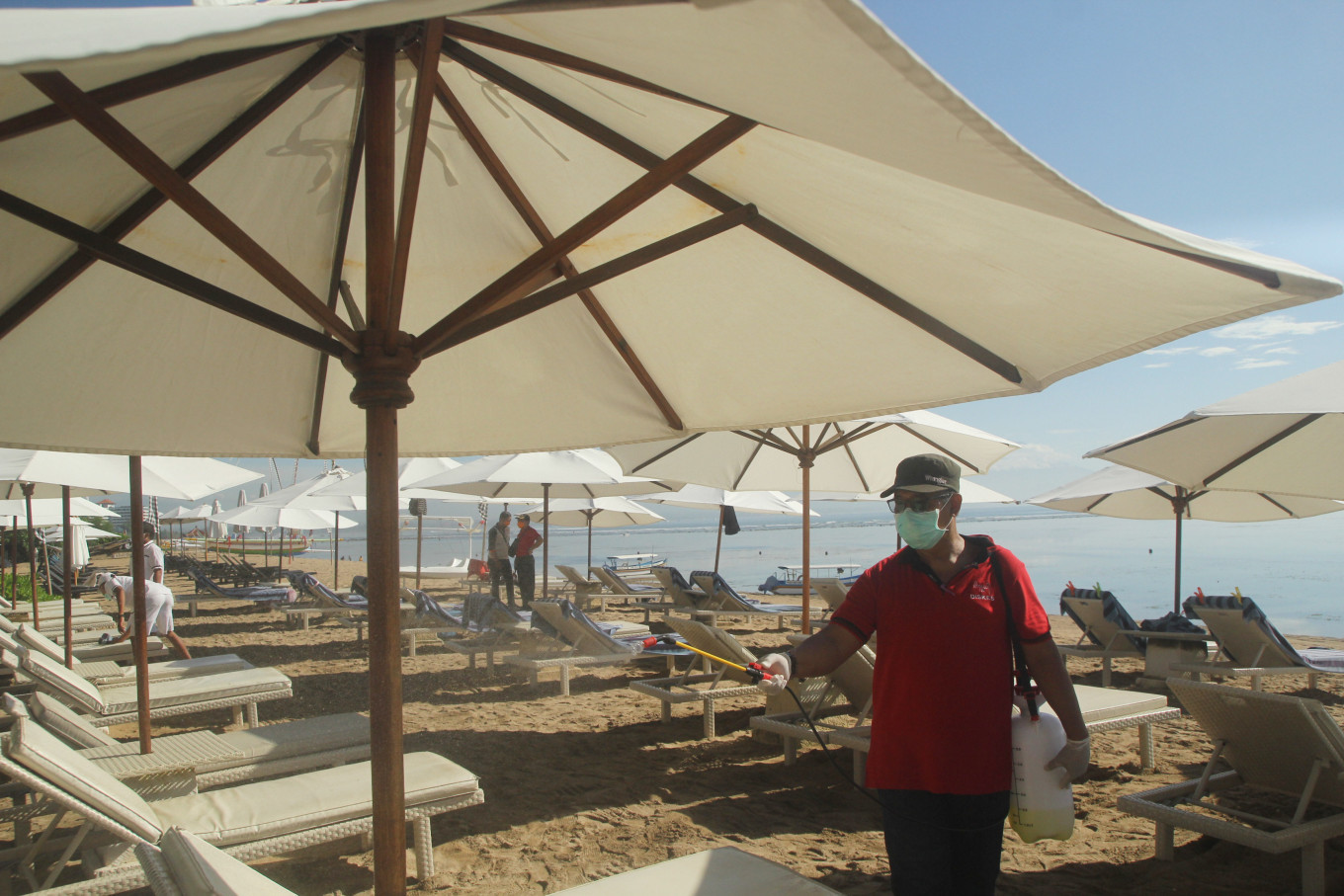Foreign visits at lowest in history in April as air travel suffers
Foreign tourist visits dropped 87.44 percent year-on-year in April.
Change Size

F
oreign tourist visits dropped 87.44 percent year-on-year (yoy) in April to a record low level as the COVID-19 pandemic hits air travel hard, recent official data show.
Central Statistics Agency (BPS) head Suhariyanto said foreign tourist visits reached 160,000 in April, a level unseen in history, as countries around the world impose different degrees of lockdowns or physical distancing measures to curb the spread of the coronavirus.
“This shows that the impact of COVID-19 on tourism is tremendous and that we need to be careful about its impacts on supporting sectors, either on room occupancy rates, the transportation sector, the creative economy industry, trade and other things,” Suhariyanto told a livestreamed press briefing on Tuesday.
“We need to think of new solutions so that this sector [tourism] can recover in the future.”
In April, only 755 people were recorded to have entered the country via air travel, making up the smallest portion of foreign tourist entries. The majority of visitors came via land transportation with over 112,700, and over 46,500 visitors arrived by sea.
Read also: Tourism will take at least a year to recover from COVID-19 outbreak: Economists
Suhariyanto said during the month that airports had seen the biggest decline in traffic in comparison to seaports and land ports. BPS data show that, aggregately, airports in the country had seen a 99.69 decline in visits during the period. Meanwhile, seaports saw a 56.67 percent decline, and land traffic dropped 5.88 percent.
Cumulatively between January and April, the number of foreign tourist visits was down 45.01 percent yoy to 2.77 million visits.
Suhariyanto explained that the cumulative downturn was not as steep because the country still managed to attract foreign tourist arrivals in January for the New Year and Chinese New Year celebrations. BPS data show that the country still saw yoy growth of 5.86 percent to 1.27 million visits in January alone.
Most of the foreign tourists visiting throughout the year came via air travel, which amounted to 1.6 million visits, meanwhile, the number of tourists entering via sea and land was recorded at over 640,000 and 517,000, respectively.
“There was a drop in visits from tourists of almost all nationalities. But, for those from Timor Leste, the downturn was minimal as they can still travel overland,” Suhariyanto said.
More than 50 percent of foreign tourists visiting the country in April came from Timor Leste, or over 83,500 visits. Tourists from Malaysia made up 38.96 percent, or over 62,300 visits, while 2,100 Singaporeans visited, making up 1.34 percent of all tourists during the month.
Read also: Govt prepares strategies to revive domestic tourism during ‘new normal’
Tourists from those three countries also reigned in foreign tourist visits between January and April, yet with a significantly lower proportion in the chart. Malaysian tourists made up 19.74 percent of the total visits, Timor Leste tourists 13.04 percent and Singaporeans 9.58 percent.
A report by the Organization for Economic Cooperation and Development (OECD) on the economic impact of the coronavirus that was published on March 2 writes that the cost of the tourism downturn will be severe.
“If the spread of the coronavirus affects visitor numbers more widely across the major economies, there would be sizeable costs, with tourism accounting directly for 4.25 percent of GDP in the OECD economies and almost 7 percent of employment,” the report reads.
In Indonesia, tourism accounts for around 5 percent of GDP, with the government planning to boost the sector’s contribution to the economy with the development of super-priority tourist destinations.
Many businesses related to tourism in the country have closed, laying off 1.4 million employees while others have furloughed staff in the two months since physical distancing and stay-at-home measures were put in place.









